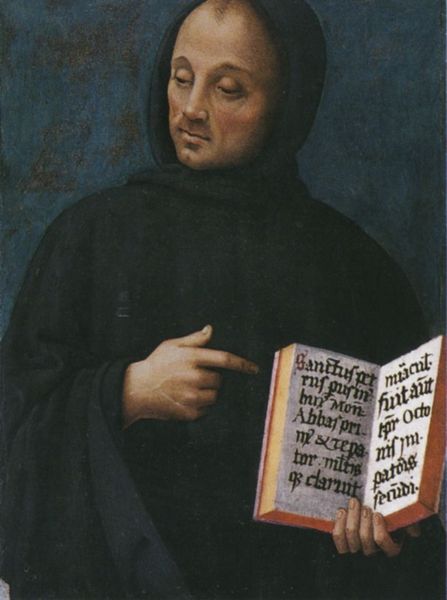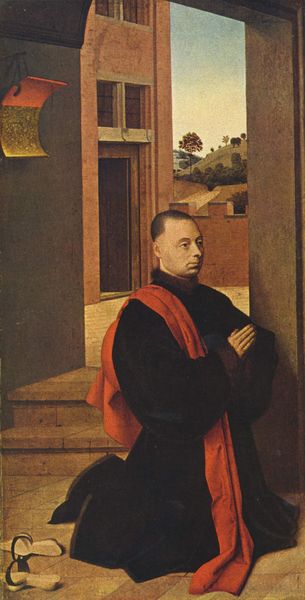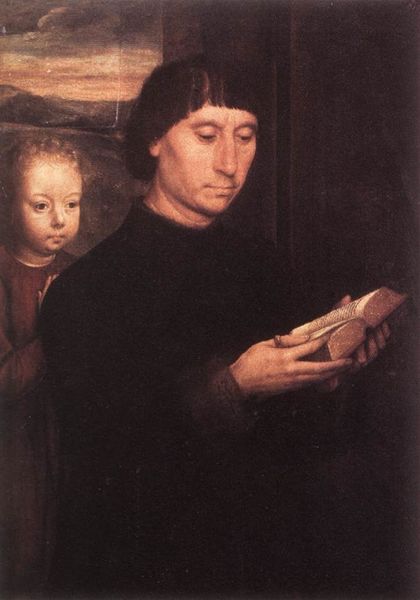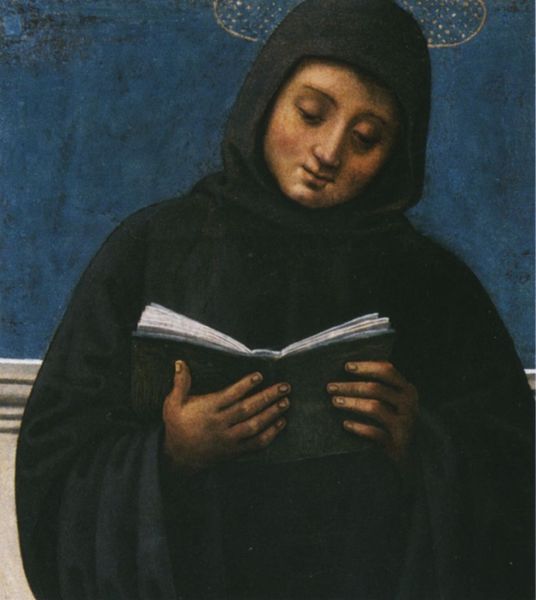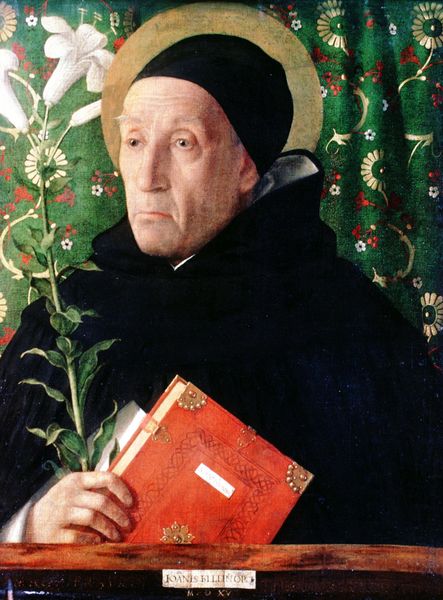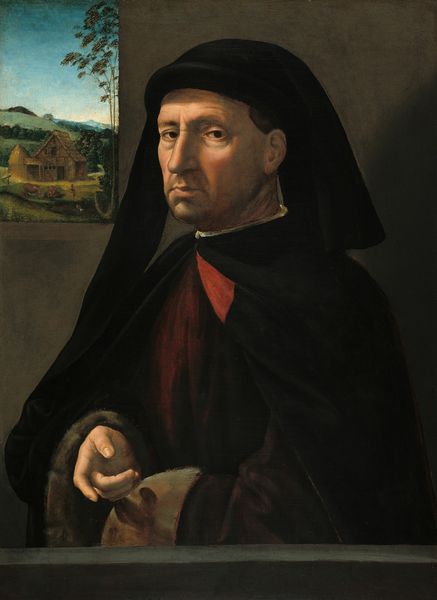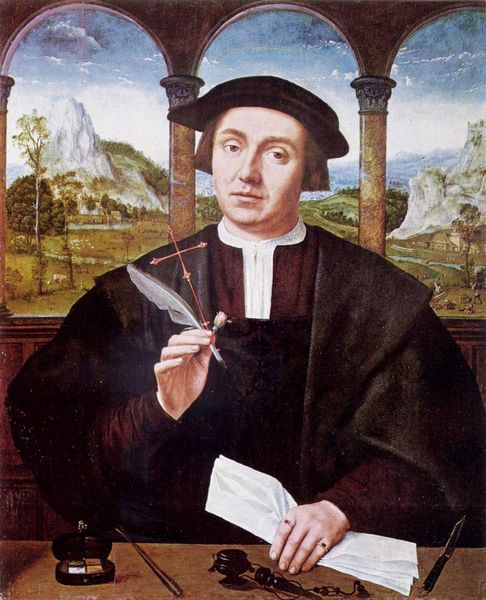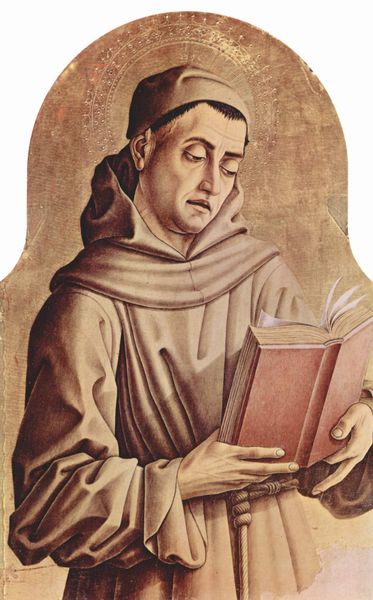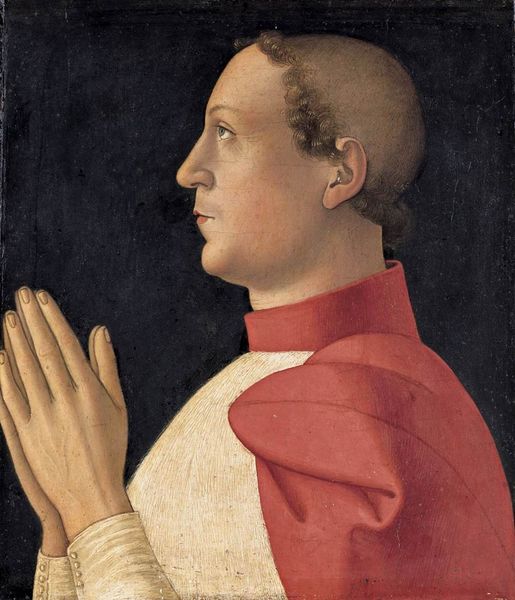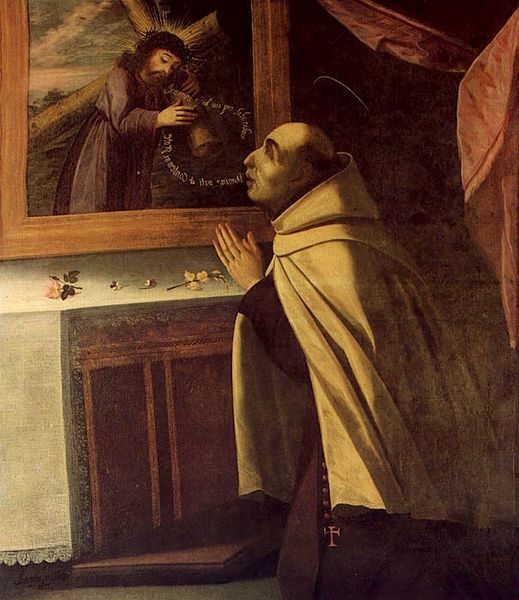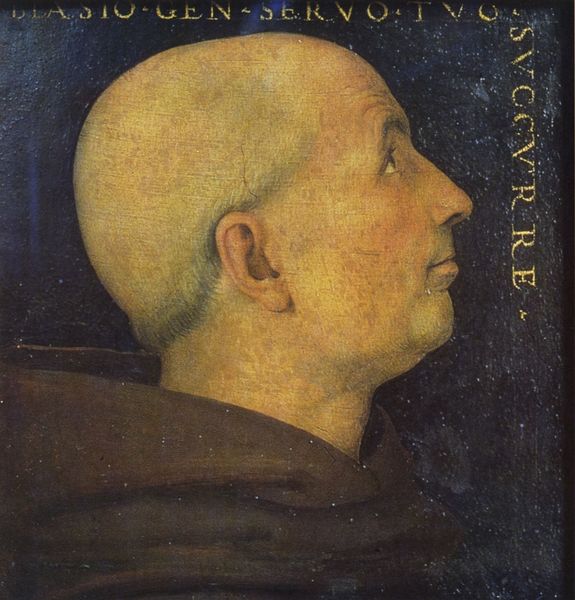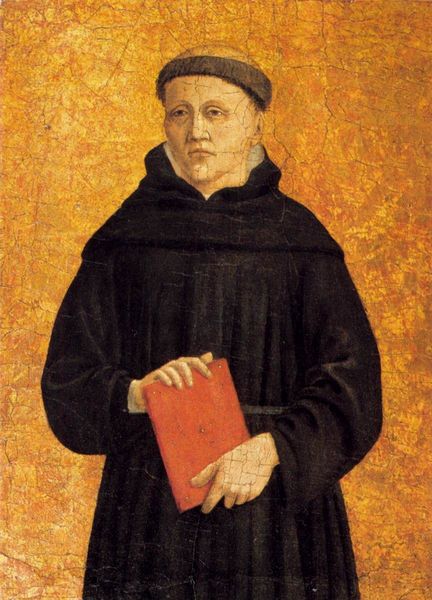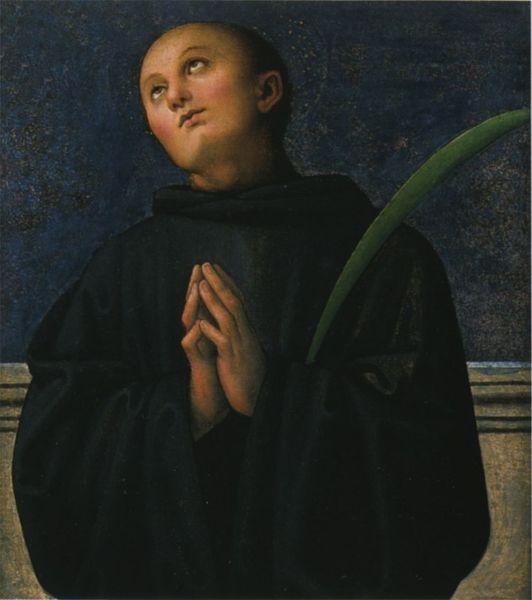
painting, oil-paint
#
portrait
#
medieval
#
painting
#
oil-paint
#
academic-art
#
italian-renaissance
#
early-renaissance
Dimensions: 45 x 34 cm
Copyright: Public domain
Curator: Standing before us is Hans Memling’s oil painting, Portrait of Benedetto di Tommaso Portinari, created around 1487. Editor: It strikes me as quietly intense. The composition is simple, almost severe, drawing my eye immediately to the subject's downward gaze and the muted tonality. There’s a certain stillness here. Curator: Precisely. The painting’s strength lies in Memling’s handling of light and shadow. Notice how the light gently models Portinari’s face, creating a subtle, almost sculptural effect. The stark background provides a formal contrast. Editor: The symbolism intrigues me. We have Portinari engrossed in a book, which suggests not just literacy, but a deeper intellectual or spiritual devotion, correct? And then there is that ornately carved staff just behind him; to whom might that religious implement belong? Curator: The book definitely implies erudition, or his intellectual status. It's a classic symbol. The staff, however, is not specific to Portinari, and may act as an embellishment for an overall tone of refined education. Editor: The inscription "Sanctus Benedictus" indicates his sainthood—Saint Benedict of Nursia, possibly alluding to guidance, or more symbolic implications of saintly virtue. Benedictines were expected to be literate in order to study scripture and their practices emphasized reading and manual labour, with both work and text intended for holy purposes. Curator: The textures contribute significantly to the painting's success, also: the delicate rendering of skin against the relatively coarse pages of the book. Also note the way Memling achieved such soft gradations of color with oil paint. The texture and gradation play a crucial role in his work’s effect. Editor: There's a psychological weight too, I think, in this depiction of monastic discipline. He is so obviously withdrawn and self-contained, that book serving as both a window into his inner world and a barrier against our intrusion. The dark robes are reminiscent of solemnity and a more somber life purpose. Curator: I find this examination of the artwork, particularly our differing perspectives on function, iconography, and formal texture, to underscore the painting’s appeal. It transcends simple portraiture through formal arrangement and thematic undertones. Editor: Absolutely. Understanding his character adds another enriching layer. The symbolic clues give us so much insight into his character.
Comments
No comments
Be the first to comment and join the conversation on the ultimate creative platform.
